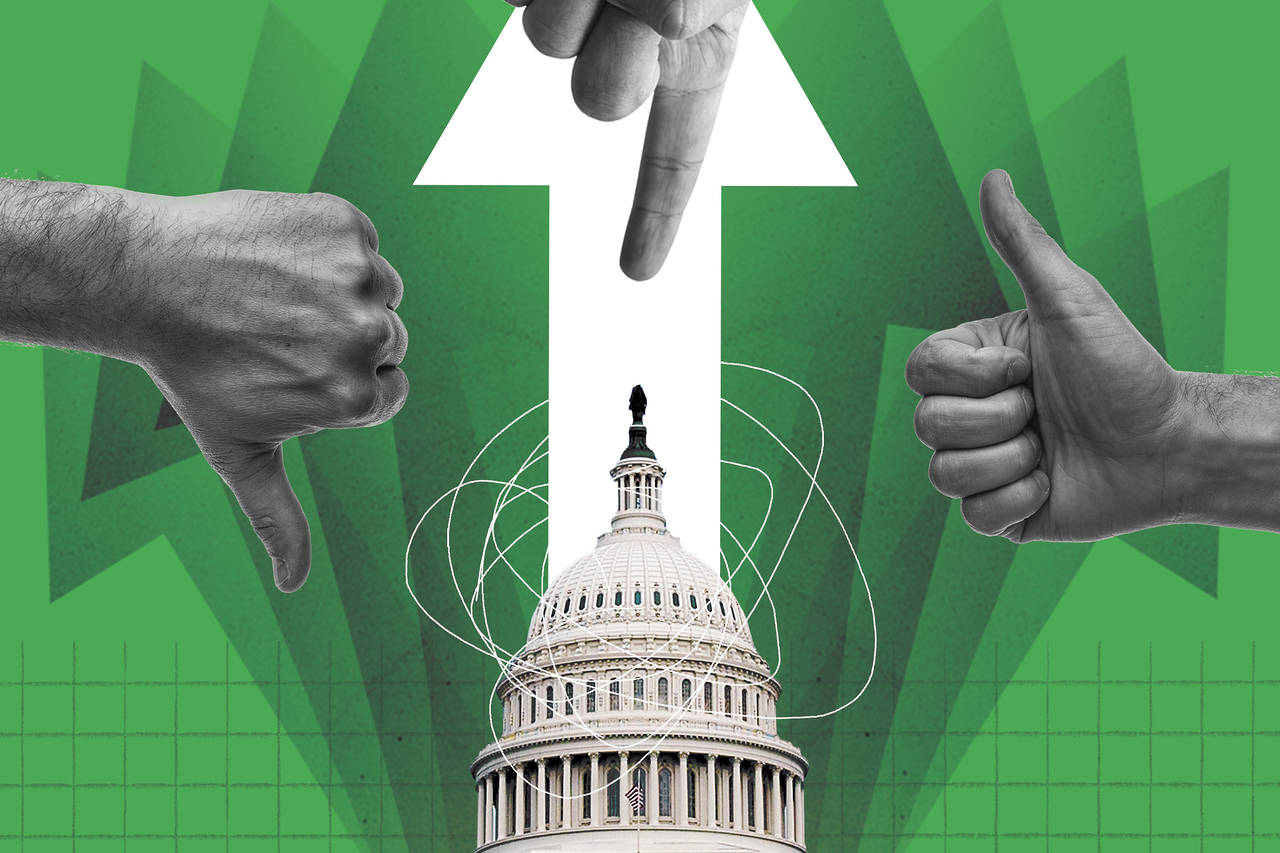Understanding The House Republican Plan For Trump Tax Cuts

Table of Contents
Core Principles of the House Republican Tax Plan
The overarching philosophy behind the proposed House Republican tax cuts centers on stimulating economic growth through supply-side economics. Proponents argue that lower taxes incentivize investment, job creation, and increased economic activity. While the specifics vary depending on the iteration of the plan, several core principles consistently emerge:
-
Supply-Side Economics: The plan's foundation rests on the belief that reducing taxes, particularly for corporations and high-income earners, will lead to increased investment and economic expansion. This approach prioritizes boosting the supply of goods and services, rather than focusing solely on demand-side stimulation.
-
Tax Code Simplification (Debated): While often cited as a goal, the actual simplification of the tax code under these proposals is a point of contention. Some argue that the plans aim to streamline certain aspects, while others believe they introduce additional complexities.
-
Targeted Tax Cuts: Past proposals have included targeted tax cuts designed to benefit specific industries or demographics. These may include incentives for specific sectors deemed vital to economic growth or tax breaks aimed at middle-class families.
-
Corporate Tax Rate Reduction: Historically, Republican tax policies have favored lower corporate tax rates. The proposed plans often include significant reductions compared to the current rate and even the rate established under the TCJA, arguing that it boosts competitiveness and encourages domestic investment. This echoes the historical Republican emphasis on reducing the burden on businesses to foster economic growth.
Proposed Changes to Individual Income Taxes
The specifics of individual income tax changes under the House Republican plan fluctuate, but common themes include adjustments to tax brackets, standard deductions, and various tax credits. Analyzing potential changes requires careful consideration:
-
Marginal Tax Rates: Proposed changes to marginal tax rates often involve lowering rates for higher-income earners while potentially making minor adjustments to lower brackets. The exact proposed changes vary across different versions of the plan.
-
Child Tax Credit and Other Deductions: Alterations to the child tax credit and other family-related deductions are frequently included, often with the aim of providing tax relief to families. These changes could impact family budgets significantly.
-
Impact on Different Income Levels: The effect on different income levels is a key point of debate. While proponents argue that broad-based tax cuts benefit all income groups, critics often point to disproportionate benefits for high-income earners. Analyzing the distribution of tax benefits across income brackets is crucial for a thorough understanding of the plan's impact.
-
Winners and Losers: Any tax reform plan inevitably creates "winners" and "losers." Some individuals and families will experience significant tax savings, while others may see their tax burden increase or remain unchanged. Understanding who benefits most and who is negatively affected is essential for a complete assessment.
Impact on Corporate Taxes
Proposed changes to corporate taxes are a central feature of the House Republican tax plans. These changes significantly impact businesses and the broader economy:
-
Corporate Tax Rate: A primary focus is the potential reduction in the corporate tax rate. This could range from minor adjustments to substantial decreases compared to both the current rate and the TCJA rate.
-
Business Investment and Job Creation: Proponents argue that lower corporate tax rates stimulate business investment and lead to job creation. However, critics contend that such tax cuts may not translate directly into increased investment and employment, instead potentially benefiting shareholders disproportionately.
-
International Competitiveness: The corporate tax rate plays a crucial role in the international competitiveness of American businesses. Lowering the rate could make American companies more attractive to foreign investment and improve their ability to compete globally.
-
Pass-Through Businesses: The taxation of pass-through businesses (like LLCs and partnerships) is also a key area where proposed changes could significantly impact small and medium-sized enterprises (SMEs). Specific provisions often aim to offer tax benefits to these businesses.
Fiscal Implications and National Debt
The fiscal impact of the House Republican tax plan on the national debt and federal budget deficit is a critical area of analysis. The consequences are far-reaching and involve both short-term and long-term effects:
-
Projected Increases in National Debt: Many analyses project that the tax cuts would lead to substantial increases in the national debt due to reduced tax revenue. The magnitude of the increase is a point of considerable debate.
-
Long-Term Fiscal Sustainability: Questions about the long-term fiscal sustainability of the nation under such a plan are central to the debate. Opponents express concerns about the plan's impact on government solvency and future generations.
-
Arguments For and Against Economic Growth: Proponents argue that the tax cuts would stimulate sufficient economic growth to offset the revenue loss, potentially leading to a balanced budget or even a surplus in the long term. Critics remain skeptical of this claim and highlight the risks of increased debt and potential inflationary pressures.
-
Impact on Government Spending and Social Programs: Increased national debt may lead to constraints on government spending and the potential for cuts to social programs. The trade-off between tax cuts and public services is a major point of contention.
Political Considerations and Public Opinion
The political landscape surrounding the House Republican tax plan is complex and influenced by various factors:
-
Intra-Party Divisions: The level of support for the tax plan within the Republican party itself is not monolithic. Different factions may prioritize different aspects of the plan, leading to internal disagreements and challenges during the legislative process.
-
Democratic Party Response and Bipartisan Support: The Democratic Party's response to such plans is typically one of strong opposition, often citing concerns about increased inequality and the national debt. The potential for bipartisan support is generally limited.
-
Public Opinion: Public opinion polls regarding tax cuts are often divided, with varying levels of support depending on income levels and other demographic factors. Understanding public sentiment is crucial for gauging the political viability of the plan.
-
Lobbying and Special Interests: Various lobbying groups and special interests exert influence on the shaping and passage of tax legislation. Their influence needs to be considered when evaluating the plan's potential trajectory.
Conclusion
This article has examined the key aspects of the House Republican plan for Trump tax cuts, analyzing its potential advantages, disadvantages, and political implications. The proposed adjustments to individual and corporate tax rates, along with their projected impact on the national debt, present a multifaceted situation with significant consequences for the American economy and its citizens. The plan's effects on different income brackets, businesses, and the government's fiscal position are subjects of ongoing debate and critical evaluation. Understanding the nuances of this plan is critical for meaningful discussion and responsible policymaking.
Call to Action: Stay informed about the ongoing discussion surrounding the House Republican plan for Trump tax cuts. Continue your research by exploring additional resources and engaging in constructive discussions to fully understand the potential impact of this significant legislative proposal. Understanding the complexities of these Trump tax cuts and their potential consequences is essential for every informed citizen.

Featured Posts
-
 Keine Verletzten Erneuter Einsatz An Braunschweiger Schule
May 13, 2025
Keine Verletzten Erneuter Einsatz An Braunschweiger Schule
May 13, 2025 -
 Elderly Hiker Missing In Peninsula Hills Extensive Search Underway
May 13, 2025
Elderly Hiker Missing In Peninsula Hills Extensive Search Underway
May 13, 2025 -
 Japans Cherry Blossom Season Your Springwatch Itinerary
May 13, 2025
Japans Cherry Blossom Season Your Springwatch Itinerary
May 13, 2025 -
 74 Ludi By Odmietlo Prenajom Nehnutelnosti Romovi Preco
May 13, 2025
74 Ludi By Odmietlo Prenajom Nehnutelnosti Romovi Preco
May 13, 2025 -
 Improving Credit Performance Walleye Cuts And Core Group Focus In Commodities
May 13, 2025
Improving Credit Performance Walleye Cuts And Core Group Focus In Commodities
May 13, 2025
